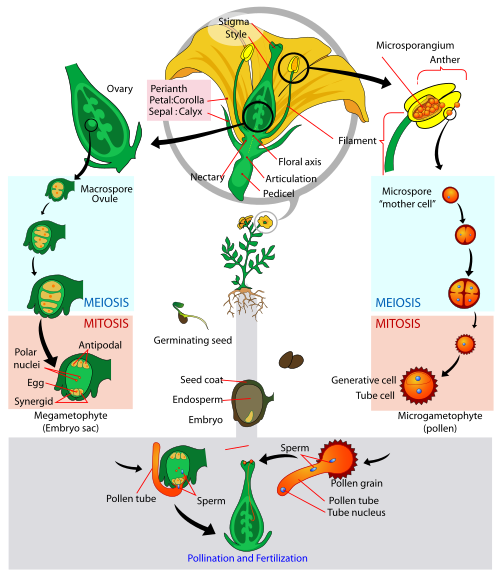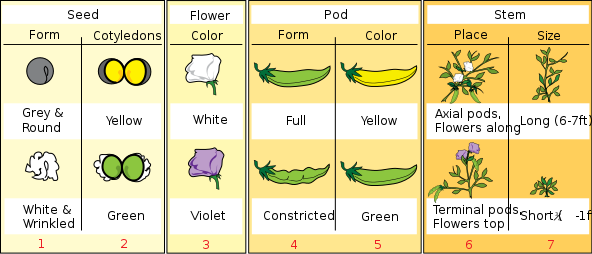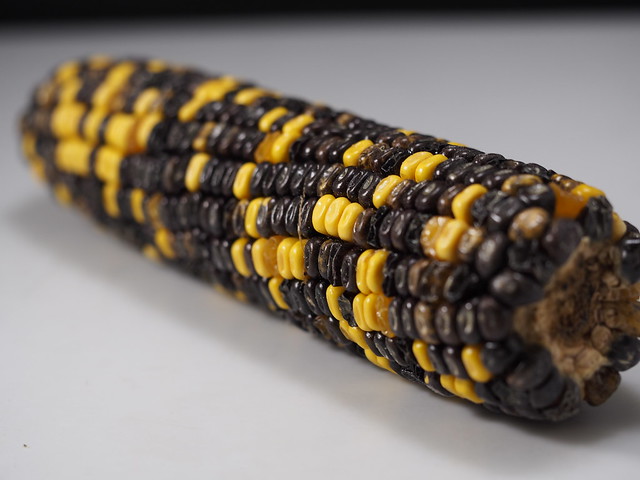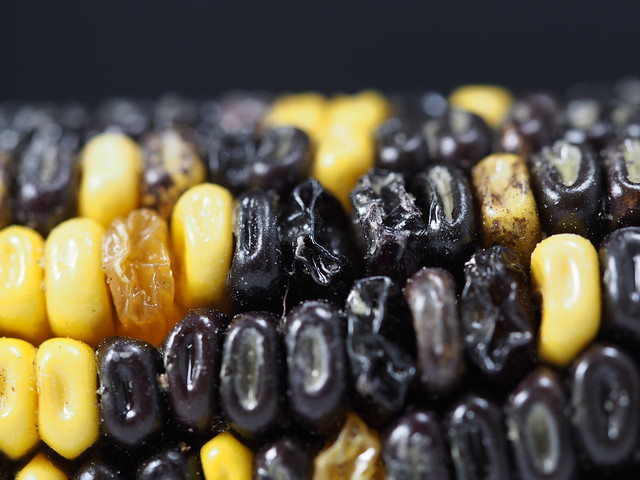9.1: Introduction
- Page ID
- 24884
\( \newcommand{\vecs}[1]{\overset { \scriptstyle \rightharpoonup} {\mathbf{#1}} } \)
\( \newcommand{\vecd}[1]{\overset{-\!-\!\rightharpoonup}{\vphantom{a}\smash {#1}}} \)
\( \newcommand{\dsum}{\displaystyle\sum\limits} \)
\( \newcommand{\dint}{\displaystyle\int\limits} \)
\( \newcommand{\dlim}{\displaystyle\lim\limits} \)
\( \newcommand{\id}{\mathrm{id}}\) \( \newcommand{\Span}{\mathrm{span}}\)
( \newcommand{\kernel}{\mathrm{null}\,}\) \( \newcommand{\range}{\mathrm{range}\,}\)
\( \newcommand{\RealPart}{\mathrm{Re}}\) \( \newcommand{\ImaginaryPart}{\mathrm{Im}}\)
\( \newcommand{\Argument}{\mathrm{Arg}}\) \( \newcommand{\norm}[1]{\| #1 \|}\)
\( \newcommand{\inner}[2]{\langle #1, #2 \rangle}\)
\( \newcommand{\Span}{\mathrm{span}}\)
\( \newcommand{\id}{\mathrm{id}}\)
\( \newcommand{\Span}{\mathrm{span}}\)
\( \newcommand{\kernel}{\mathrm{null}\,}\)
\( \newcommand{\range}{\mathrm{range}\,}\)
\( \newcommand{\RealPart}{\mathrm{Re}}\)
\( \newcommand{\ImaginaryPart}{\mathrm{Im}}\)
\( \newcommand{\Argument}{\mathrm{Arg}}\)
\( \newcommand{\norm}[1]{\| #1 \|}\)
\( \newcommand{\inner}[2]{\langle #1, #2 \rangle}\)
\( \newcommand{\Span}{\mathrm{span}}\) \( \newcommand{\AA}{\unicode[.8,0]{x212B}}\)
\( \newcommand{\vectorA}[1]{\vec{#1}} % arrow\)
\( \newcommand{\vectorAt}[1]{\vec{\text{#1}}} % arrow\)
\( \newcommand{\vectorB}[1]{\overset { \scriptstyle \rightharpoonup} {\mathbf{#1}} } \)
\( \newcommand{\vectorC}[1]{\textbf{#1}} \)
\( \newcommand{\vectorD}[1]{\overrightarrow{#1}} \)
\( \newcommand{\vectorDt}[1]{\overrightarrow{\text{#1}}} \)
\( \newcommand{\vectE}[1]{\overset{-\!-\!\rightharpoonup}{\vphantom{a}\smash{\mathbf {#1}}}} \)
\( \newcommand{\vecs}[1]{\overset { \scriptstyle \rightharpoonup} {\mathbf{#1}} } \)
\( \newcommand{\vecd}[1]{\overset{-\!-\!\rightharpoonup}{\vphantom{a}\smash {#1}}} \)
\(\newcommand{\avec}{\mathbf a}\) \(\newcommand{\bvec}{\mathbf b}\) \(\newcommand{\cvec}{\mathbf c}\) \(\newcommand{\dvec}{\mathbf d}\) \(\newcommand{\dtil}{\widetilde{\mathbf d}}\) \(\newcommand{\evec}{\mathbf e}\) \(\newcommand{\fvec}{\mathbf f}\) \(\newcommand{\nvec}{\mathbf n}\) \(\newcommand{\pvec}{\mathbf p}\) \(\newcommand{\qvec}{\mathbf q}\) \(\newcommand{\svec}{\mathbf s}\) \(\newcommand{\tvec}{\mathbf t}\) \(\newcommand{\uvec}{\mathbf u}\) \(\newcommand{\vvec}{\mathbf v}\) \(\newcommand{\wvec}{\mathbf w}\) \(\newcommand{\xvec}{\mathbf x}\) \(\newcommand{\yvec}{\mathbf y}\) \(\newcommand{\zvec}{\mathbf z}\) \(\newcommand{\rvec}{\mathbf r}\) \(\newcommand{\mvec}{\mathbf m}\) \(\newcommand{\zerovec}{\mathbf 0}\) \(\newcommand{\onevec}{\mathbf 1}\) \(\newcommand{\real}{\mathbb R}\) \(\newcommand{\twovec}[2]{\left[\begin{array}{r}#1 \\ #2 \end{array}\right]}\) \(\newcommand{\ctwovec}[2]{\left[\begin{array}{c}#1 \\ #2 \end{array}\right]}\) \(\newcommand{\threevec}[3]{\left[\begin{array}{r}#1 \\ #2 \\ #3 \end{array}\right]}\) \(\newcommand{\cthreevec}[3]{\left[\begin{array}{c}#1 \\ #2 \\ #3 \end{array}\right]}\) \(\newcommand{\fourvec}[4]{\left[\begin{array}{r}#1 \\ #2 \\ #3 \\ #4 \end{array}\right]}\) \(\newcommand{\cfourvec}[4]{\left[\begin{array}{c}#1 \\ #2 \\ #3 \\ #4 \end{array}\right]}\) \(\newcommand{\fivevec}[5]{\left[\begin{array}{r}#1 \\ #2 \\ #3 \\ #4 \\ #5 \\ \end{array}\right]}\) \(\newcommand{\cfivevec}[5]{\left[\begin{array}{c}#1 \\ #2 \\ #3 \\ #4 \\ #5 \\ \end{array}\right]}\) \(\newcommand{\mattwo}[4]{\left[\begin{array}{rr}#1 \amp #2 \\ #3 \amp #4 \\ \end{array}\right]}\) \(\newcommand{\laspan}[1]{\text{Span}\{#1\}}\) \(\newcommand{\bcal}{\cal B}\) \(\newcommand{\ccal}{\cal C}\) \(\newcommand{\scal}{\cal S}\) \(\newcommand{\wcal}{\cal W}\) \(\newcommand{\ecal}{\cal E}\) \(\newcommand{\coords}[2]{\left\{#1\right\}_{#2}}\) \(\newcommand{\gray}[1]{\color{gray}{#1}}\) \(\newcommand{\lgray}[1]{\color{lightgray}{#1}}\) \(\newcommand{\rank}{\operatorname{rank}}\) \(\newcommand{\row}{\text{Row}}\) \(\newcommand{\col}{\text{Col}}\) \(\renewcommand{\row}{\text{Row}}\) \(\newcommand{\nul}{\text{Nul}}\) \(\newcommand{\var}{\text{Var}}\) \(\newcommand{\corr}{\text{corr}}\) \(\newcommand{\len}[1]{\left|#1\right|}\) \(\newcommand{\bbar}{\overline{\bvec}}\) \(\newcommand{\bhat}{\widehat{\bvec}}\) \(\newcommand{\bperp}{\bvec^\perp}\) \(\newcommand{\xhat}{\widehat{\xvec}}\) \(\newcommand{\vhat}{\widehat{\vvec}}\) \(\newcommand{\uhat}{\widehat{\uvec}}\) \(\newcommand{\what}{\widehat{\wvec}}\) \(\newcommand{\Sighat}{\widehat{\Sigma}}\) \(\newcommand{\lt}{<}\) \(\newcommand{\gt}{>}\) \(\newcommand{\amp}{&}\) \(\definecolor{fillinmathshade}{gray}{0.9}\)Writing the Rules of Heredity:
In the mid-1800s, an Augustinian friar named Gregor Mendel formalized quantitative observations on heredity in the pea plant. He undertook hybridization experiments that utilized purebred or true-breeding plants with specific qualities over many generations to observe the passage of these traits. Some of these physical traits included: seed shape, flower color, plant height, and pod shape.
 The pea plant (Pisum sativum) offered a great advantage of being able to control the fertilization process and having large quantities of offspring in a short period of time. In a simple experiment of tracking the passage of a single trait (monohybrid cross) like flower color through multiple generations, he was able to formulate rules of heredity. In this case, pea plants either produced white flowers or purple flowers for many generations (true-breeding purple flower or true breeding white flower). These true-breeding plants are referred to as the Parental Generation (P). By removing the male parts of the pea flower (anthers containing pollen), Mendel was able to control for self-pollination. The hybridization came from applying the pollen from one true-breeding plant to the female part (the pistil) of the opposite true-breeding plant. The subsequent offspring are referred to as the First Filial Generation (F1). In the first generation, all the flowers are purple. Permitting self-pollination generates a Second Filial Generation (F2). This generation sees the re-emergence of the white-flowered plants in an approximate ratio of 3 purple-flowered to 1 white-flowered plants.
The pea plant (Pisum sativum) offered a great advantage of being able to control the fertilization process and having large quantities of offspring in a short period of time. In a simple experiment of tracking the passage of a single trait (monohybrid cross) like flower color through multiple generations, he was able to formulate rules of heredity. In this case, pea plants either produced white flowers or purple flowers for many generations (true-breeding purple flower or true breeding white flower). These true-breeding plants are referred to as the Parental Generation (P). By removing the male parts of the pea flower (anthers containing pollen), Mendel was able to control for self-pollination. The hybridization came from applying the pollen from one true-breeding plant to the female part (the pistil) of the opposite true-breeding plant. The subsequent offspring are referred to as the First Filial Generation (F1). In the first generation, all the flowers are purple. Permitting self-pollination generates a Second Filial Generation (F2). This generation sees the re-emergence of the white-flowered plants in an approximate ratio of 3 purple-flowered to 1 white-flowered plants.
Pea flowers

Male and female parts of flowers. Mendel removed the anthers containing pollen to prohibit self-pollination and selectively applied the pollen to stigmas in order to control the “hybridization”.
The loss of one variant on the trait in the F1 plants with the re-emergence in the F2prompted Mendel to propose that each individual contained 2 hereditary particles where each offspring would inherit 1 of these particles from each parent. Furthermore, the loss of one of the variants in the F1 was explained by one variant masking the other, as he explained as being dominant. The re-emergence of the masked variation, or recessive trait, in the next generation was due to both particles being of the masked variety. We now refer to these hereditary particles as genes and the variants of the traits as alleles.

Mendel’s Rules of Segregation and Dominance:
The observations and conclusions that Mendel made from the monohybrid cross identified that inheritance of a single trait could be described as passage of genes (particles) from parents to offspring. Each individual normally contained two particles and these particles would separate during the production of gametes. During sexual reproduction, each parent would contribute one of these particles to reconstitute offspring with 2 particles. In the modern language, we refer to the genetic make-up of the two “particles” (in this case, alleles) as the genotype and the physical manifestation of the traits as the phenotype. Therefore, Mendel’s first rues of inheritance are as follows:
- Law of Segregation
- During gamete formation, the alleles for each gene segregate from each other so that each gamete carries only one allele for each gene
- Law of Dominance
- An organism with at least one dominant allele will have the phenotype of the dominant allele.
- The recessive phenotype will only appear when the genotype contains 2 recessive alleles. This is referred to as homozygous recessive
- The dominant phenotype will occur when the genotype contains either 2 dominant alleles (homozygous dominant) or one dominant and one recessive (heterozygous)

The F1 cross (Punnett square) illustrating flower color inheritance in the F2
Punnett Square is a tool devised to make predictions about the probability of traits observed in the offspring in the F2 generation and illustrate the segregation during gamete formation.
The Single Trait Cross (Monohybrid Cross):
Monohybrid cross (one trait cross) observing the pod shape of peas.
Monohybrid cross (on trait cross) observing the pod color of peas.
Corn Coloration in an F2 Population (Activity):
A corn cob contains hundreds of kernels. Each kernel is a seed that represents an individual organism. In the cob, we can easily see kernel color as a phenotype.
- Retrieve an F2 corn cob
- Count a total of 100 kernels
- Tally the number of Yellow Kernels within that 100 (in the dried state, anything yellow or honey-colored counts as yellow)
- Tally the number of Purple Kernels within that 100 (in the dried state, purple colored kernels may appear brown)
- Ignore any speckled kernels that may have yellow and purple within them
- Compare numbers with the class as a whole
- From the numbers:
- Is there a dominant color?____________________________________________________________________________________________________________________
- Which is dominant, if there is?_________________________________________________________________________________________________________________
- Create a Punnett square to illustrate the expected number of each color in a simple dominant:recessive paradigm.
The Two Trait Cross (Dihybrid Cross):
Mendel continued his experimentation where he looked at two traits. These two trait crosses are called dihybrid crosses. While the monohybrid cross would yield 3:1 ratio of the phenotypes, the dihybrid crosses would yield 9:3:3:1 ratio of all the combinations of each phenotype.
Mendel’s Rule of Independent Assortment:
The dihybrid cross revealed another law of inheritance to Mendel. By observing the 9:3:3:1 ratio, Mendel concluded that traits were not tied to each other. That is to say, if a pea pod was yellow, it could still be either smooth or wrinkled in texture. This lack of linkage between genes yielding different characteristics was dubbed the Law of Independent Assortment. Genes for different traits can segregate independently during the formation of gametes.
Kernel Coloration and Texture in an F2 Population (Activity):
- Retrieve a dihybrid F2 corn cob
- Count a total of 200 kernels
- Tally the number of Yellow Kernels that are rounded and smooth in texture
- Tally the number of Yellow Kernels that are shriveled and wrinkly in texture (honey-colored)
- Tally the number of Purple Kernels within that rounded and smooth in texture
- Tally the number of Purple Kernels within that are shriveled and wrinkly in texture
- Ignore any speckled kernels that may have yellow and purple within them
- Compare numbers with the class as a whole
- Each kernel constitutes an individual organism ( a seed that can give rise to a whole new plant). From the numbers:
- Is there a dominant texture (smooth or shriveled)?________________________________________________________________________________________________
- Which is dominant, if there is?_________________________________________________________________________________________________________________
- Is there a color that always pairs with a texture or do these characteristics assort independently?___________________________________________________________
- Create a Punnett square to illustrate the expected number of each color/texture combination in a simple dominant:recessive paradigm.
Modern Study of Genetics:
Human variation and diversity: SNPs
Epigenetics: Beyond the DNA
Epigenetics: Environment Shaping Expression
Additional Resources:
- Mendelian Inheritance http://www.visionlearning.com/en/library/Biology/2/Mendel-and-Inheritance/129
- Independent Assortment http://www.visionlearning.com/en/library/Biology/2/Mendel-and-Independent-Assortment/145
- Genetics and Statistical Analysis http://www.nature.com/scitable/topicpage/genetics-and-statistical-analysis-34592
- Genetic Linkage http://www.nature.com/scitable/topicpage/discovery-and-types-of-genetic-linkage-500
- DNA as the Genetic Material http://www.nature.com/scitable/topicpage/discovery-of-dna-as-the-hereditary-material-340
- What is a gene? http://www.nature.com/scitable/topicpage/what-is-a-gene-colinearity-and-transcription-430




